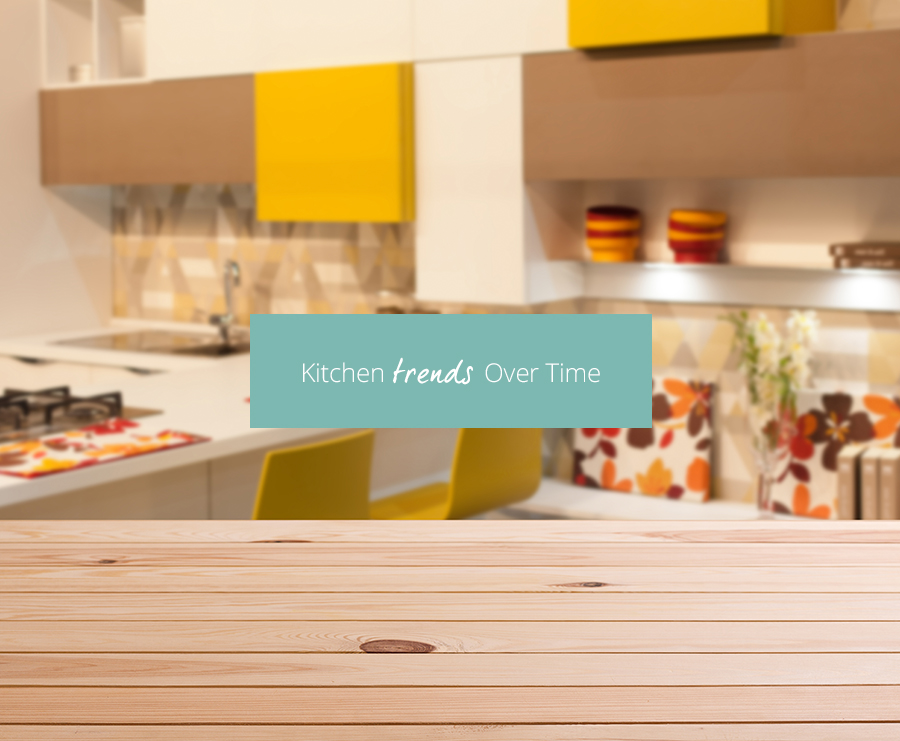Kitchen Trends Over Time
More so than any other room in the house, kitchens respond to changing tastes, trends, and technology a bit faster. At Kitchen Compare we love all things kitchen – whether that’s past, present, or future - so thought it would be interesting to look back at some of the key kitchen trends over the last five decades. This includes several trendy features that came and went (and in many cases, came back again!)

1970s: The '60s was truly the decade responsible for ushering in daring kitchen design, but it was the '70s that took it to a very experimental place, for example, wooden cabinets with avocado-coloured appliances and saturated wall colours. Technology also took an major turn in the '70s, with microwaves making a regular appearance in kitchens.
Acid-hued Formica (the decade's most popular material) allowed homeowners to become more creative with their kitchen cabinets and move away from the previous white, cream or wood-effect cabinets. To tone things down, plain wooden countertops were popular, creating a cutting surface throughout the kitchen which didn’t compete with the base and wall units.
Fridges become more of a feature with water and ice dispensers starting to appear in the door of super high-tech refrigerators, dazzling everyone with the novelty of not having to go to the sink for a drink.

1980s: Lighter colours, high ceilings, beams, and paler woods started to appear as the more rustic country-look took hold in the early ‘80s. Usage and function also slowly started to alter as the kitchen became less of a space for preparing and cooking food, but more of a space for hanging out together as a family. Colourful appliances start to disappear as sleek black or white ones made their way onto surfaces, though sometimes the creamier, almond-coloured appliances would be chosen to work in well with the country look and feel.
Just because most homeowners favoured black and white appliances doesn't mean they ignored colour. In the mid-late ‘80s, pastel hues became popular in the home and this trend regularly made its way also into the kitchen using these colours to signify the different "zones" for different functions.

1990s: In the ‘90s most kitchens were still relatively small with cabinetry on almost every available wall. Where previous decades had fallen in love with laminate, Formica, and wooden worktops, the focus in the ‘90s was all about granite. Overly detailed, country-style wooden in-frame cabinets, black sparkly worktops and chrome handles summed up the key style.
Colour was decidedly more subdued in the '90s, with sage green and blue kitchens walking that fine line between soothing and statement. Both colours worked well with both black and stainless worktops, appliances and accessories and started to demonstrate a bit of personality. As an alternative, the country-kitchen-look of the '80s pared down even further in the '90s, with the emergence of the farmhouse feel - a little nostalgic, this eclectic style introduced marble, open shelving, white cabinets, and vintage ceramics.

2000s: The early 2000s saw the continuation of the wooden Shaker kitchen with black worktops but this moved quite quickly towards white, glossy cabinets – a popular choice which made kitchens seem brighter, larger, and more inviting. More minimal schemes increased in popularity and the rooms started to morph into kitchens we would recognise more today. The kitchen-diner trend took off and peninsulas and islands became a bigger part of the kitchen design conversation as did discussions around intelligent and smart appliances.
By the late Noughties, wood was phased out and white gloss was very much in. Larger kitchen-diners with walls of glazing leading out into the garden started what is now the very sought-after indoor-outdoor look. Sofas, easy chairs, and islands with integrated tables started to make their mark setting the foundation for the growth of the multi-functional, open plan style living we’ve come to experience over the last 10 yrs.

The Compare Network
Copyright – Insight Retail Group Ltd 2024 All rights reserved